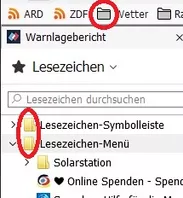Versuch die Bearbeitung mal auf dieser Webseite: .svg-Grafiken bearbeiten
Darum geht es nicht.
Wie einfach man die einfärben kann, habe ich doch oben schon gezeigt.
Der Unterschied ist die Art der Einbindung im CSS.
Wird die Grafik per url("./icons/folder.svg") eingebunden, kann sie nicht mehr im CSS per fill verändert werden.
Greift man auf die gleiche Grafik per url("chrome://global/skin/folder.svg") zu, funktioniert es per fill.




